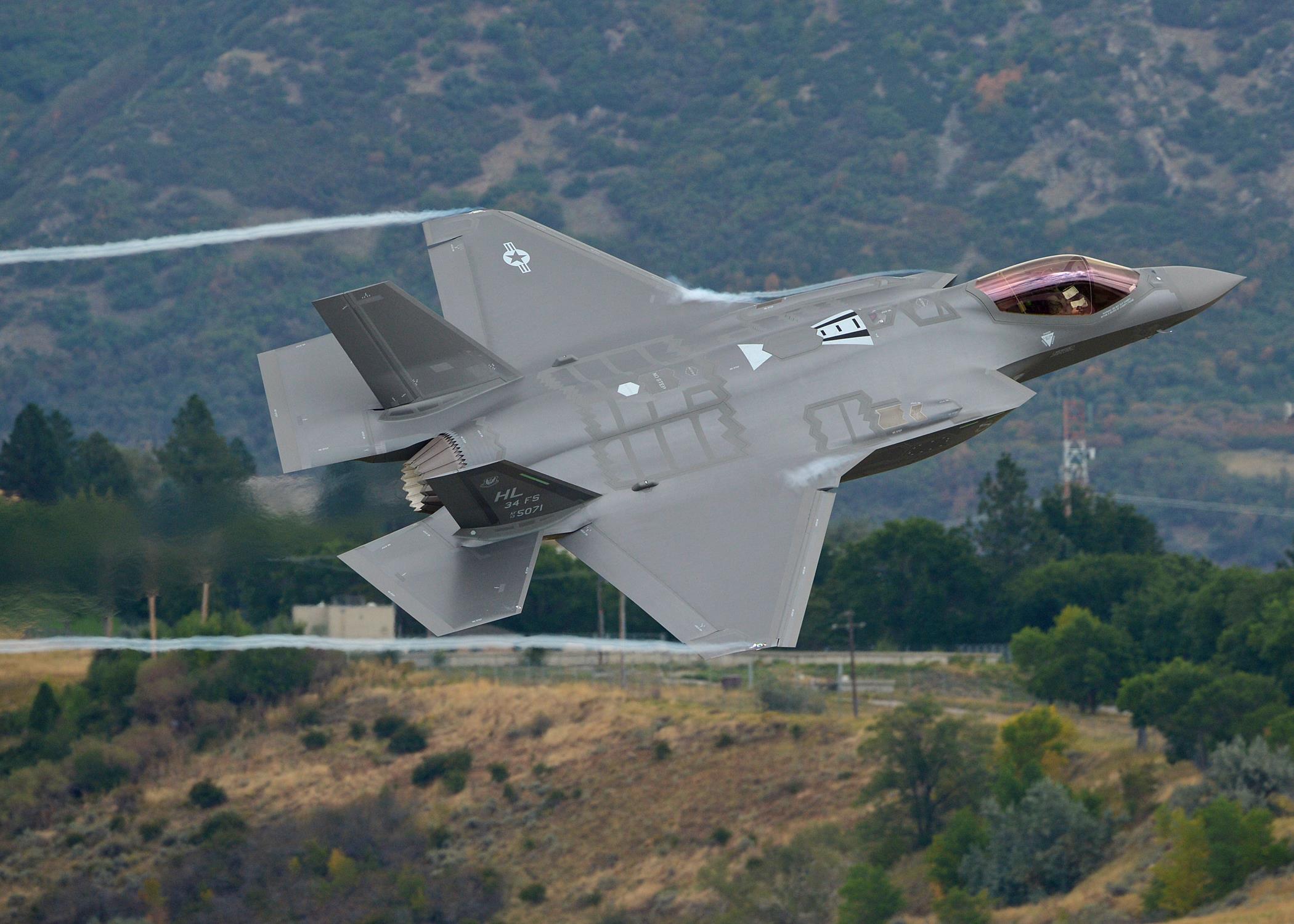Lt. Col. George Watkins, the 34th Fighter Squadron commander, flies a combat-coded F-35A Lightning II aircraft past the control tower at Hill AFB, Utah, Sept. 17, 2015. Air Force photo by Alex R. Lloyd.
The Pentagon has reached a handshake deal with Lockheed Martin on Lot 10 production of the F-35 fighter, and for the first time, unit prices on the “A” model of the jet—the variant used by the Air Force—are below $100 million a copy.
The “agreement in principle” calls for 90 jets, the largest lot so far, at a cost of $8.2 billion. The bulk are A models—76—along with 12 F-35Bs and two F-35Cs. The unit prices—engine included—in Lot 10 are about seven percent lower than they were in Lot 9, or about one percent lower than predicted by the Joint Program Office in December.
Airframe costs alone declined by eight percent. In Lot 10, the F-35As will cost $94.6 million each, a reduction of 7.3 percent from Lot 9; the F-35B short-takeoff/vertical landing models will costs $122.8 million, down 6.7 percent; and the carrier-capable F-35Cs will be $121.8 million each, down 7.9 percent from Lot 9.
Of the 90 aircraft, 76 are F-35As, of which 44 are going to the Air Force. Of the other A models, eight are for Australia, six each for Israel, Norway, and South Korea, and two for Turkey. The Marine Corps is buying 9 F-35Bs and the UK three, while the Navy is buying both of the F-35Cs. The Pentagon noted that the price of the F-35A has fallen 60 percent since the Lot 1 contract.
Program executive officer Lt. Gen. Christopher Bogdan called the agreement a “good and fair deal” for all parties involved and said “we continue to work with industry to drive costs out of the program.”
The Pentagon highlighted the price drop on the A model, noting that this variant represents “85 percent of the program of record,” and its price has dropped 12 percent over Lots 9 and 10. The contract also provides “manufacturing-support equipment and ancillary mission equipment.” Production of the F-35 is set to quadruple from 45 a year in 2016 to 160+ per year (about 14 per month) in 2020, which is expected to be the peak rate achieved.
The Pentagon, in a press release labeled, “Lowest Priced F-35s in Program History,” trumpeted “a $728 million reduction when compared to Lot 9.” Industry and Pentagon officials explained that this figure was derived by multiplying the unit price reductions of each variant from Lots 9 to 10 by the number of units of each variant purchased in Lot 10. This particular calculus has not been used before in announcing F-35 price changes, but defense officials said it was included to highlight President Donald Trump’s personal intercession in the program.
Lockheed Martin, in a statement for the press, said the increase from 57 to 90 units from Lot 9 to 10 “enables us to reduce costs by taking advantage of economies of scale and production efficiencies.” The company also said, “President Trump’s personal involvement in the F-35 program accelerated the negotiations and sharpened our focus on driving down the price. The agreement was reached in a matter of weeks and represents significant savings over previous contracts.”
The DOD release also enumerated the number of jobs that result directly or indirectly from the F-35 program, asserting that it now generates 146,000 jobs, and will, at peak production in the 2020s, generate more than 260,000 jobs. Lockheed said Lot 10 will create 1,800 new jobs at its Fort Worth, Texas, F-35 plant “and support thousands more jobs in our US supply chain.”
More than 200 F-35s have been delivered so far.
